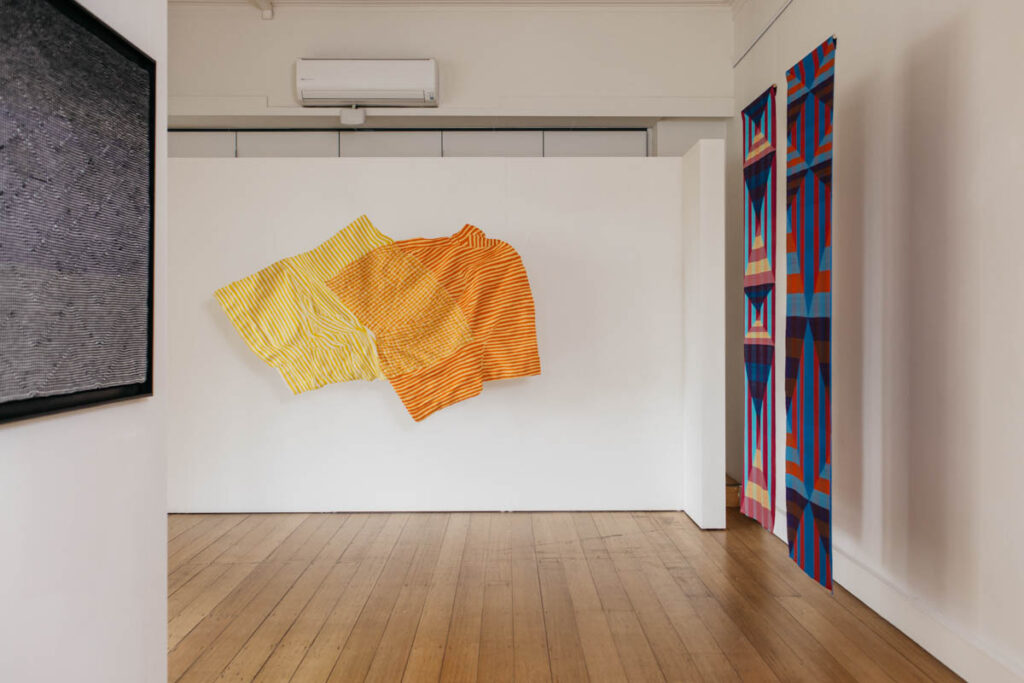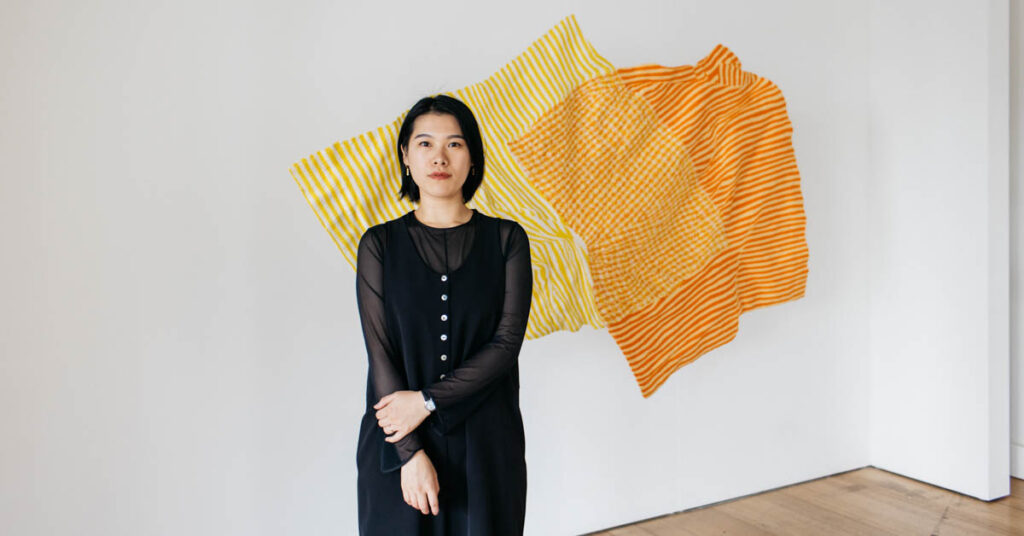We speak to Australian Tapestry Workshop weaver-in-residence, Misako Nakahira, about her unique technique of blending weaves.
Misako Nakahira is a Japanese weaver who specialises in the tsuzureori technique, a mingei-style weaving that uses irregular hand-manipulated weft threads. In her recent work, she overlays two striped fabrics that interact like two converging waves of water. She is currently a weaver in residence at the Australian Tapestry Workshop.
✿ Did you have an important weaving teacher?
I have many textile teachers. The teacher who influenced me the most was my professor when I was in college, Keiji Nio. He studied architecture as a student and then textiles. Therefore, while his work is textile, it also has a sculptural aspect.
The teacher taught me the interesting structure and unique colours of textiles. I also learned from him to be aware of the relationship between the work and the space.
I like architecture and sculpture. That’s why I want the tapestries I weave to also be sculptural. Although it is a two-dimensional work, it is a work that can be viewed from any angle and is interesting.
✿ For how long are you usually comfortable working at a loom before you need to take a break?
It takes about an hour to weave comfortably. I take a 15-minute break once every one to 1.5 hours. Weaving requires a lot of energy, so I try to take frequent breaks.
✿ When is the sense of touch particularly important in your creative process?
Touch is important when it’s time to consider the size of the piece and the density of the fabric. I often weave stripes (geometric patterns), so it’s important to balance the technique with the diagram below. If the pattern is detailed, there are many things you can think about, such as reducing the density of the warp threads or changing the number of weft threads.
I don’t aim for realistic expression, so when I’m having trouble, I try to find a size and density that maximizes the tactility of the thread I’m using.
Follow @nakahira_misako.





Comments
Looks fascinating and very striking. It will brighten the often sad and sometimes frightening hospital environment.